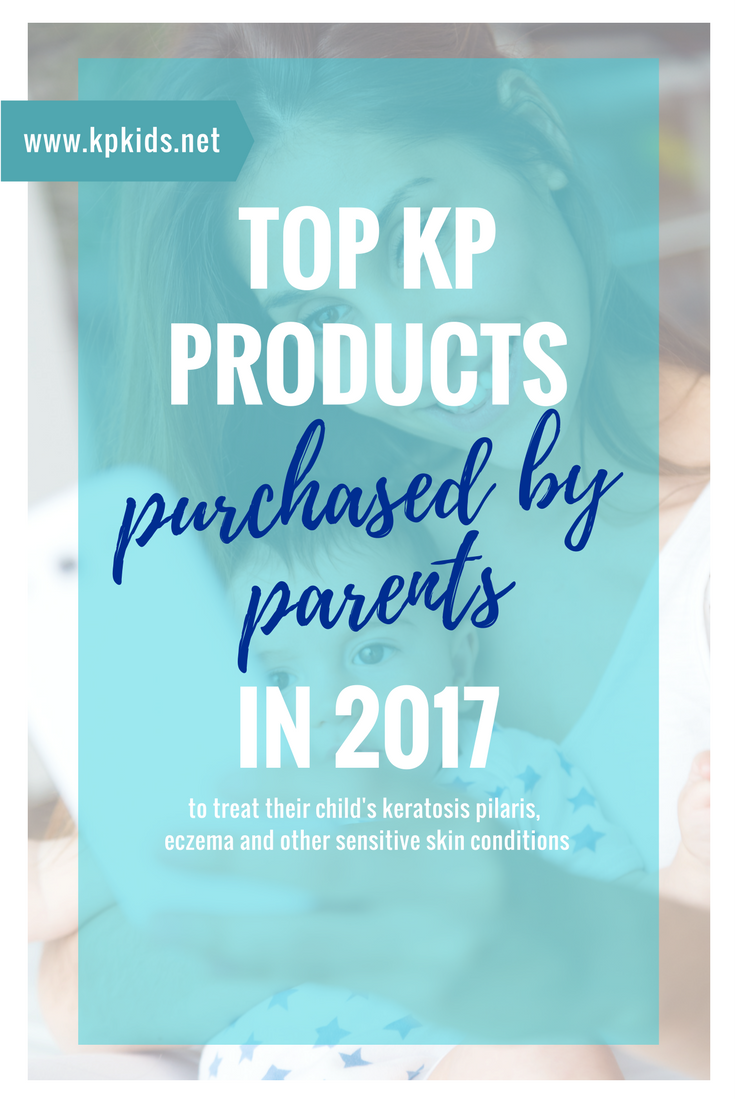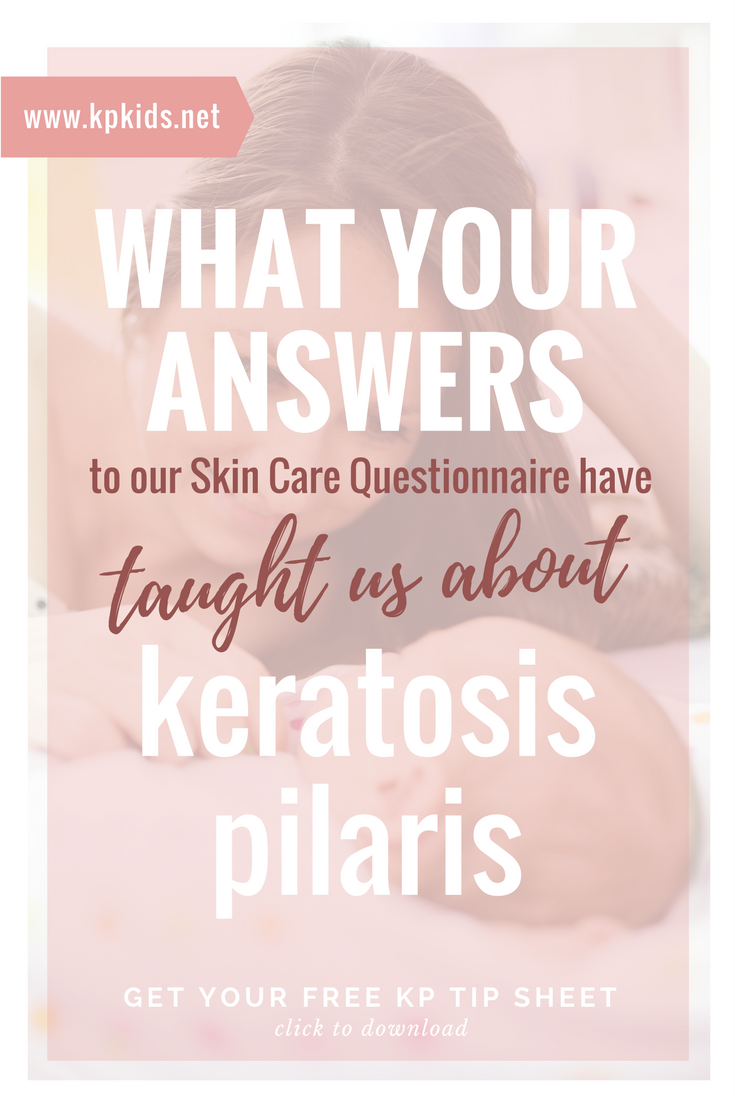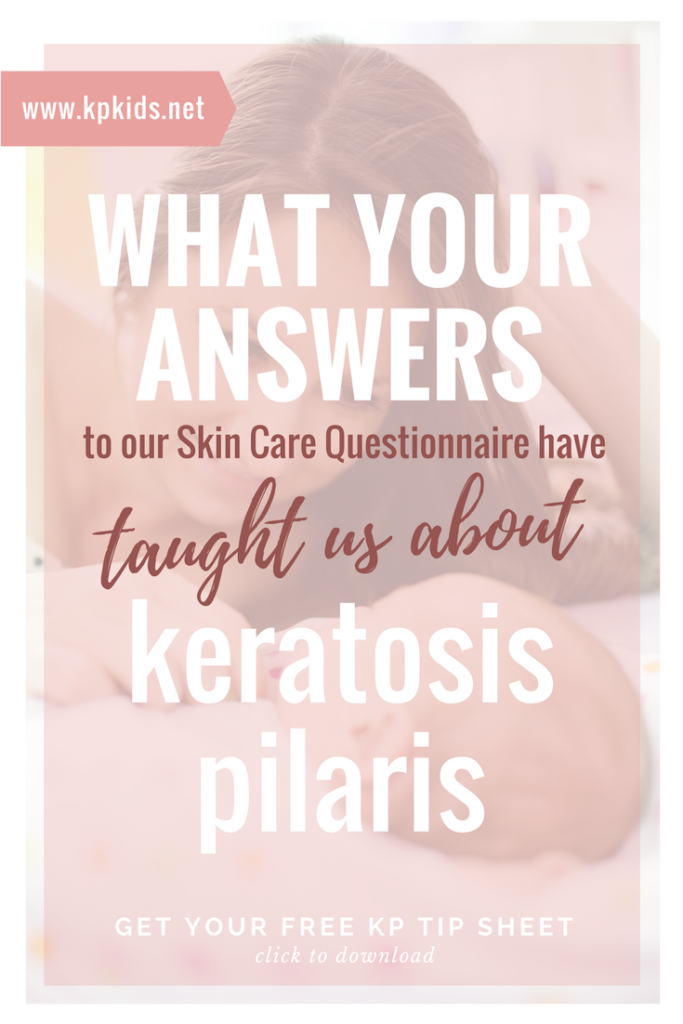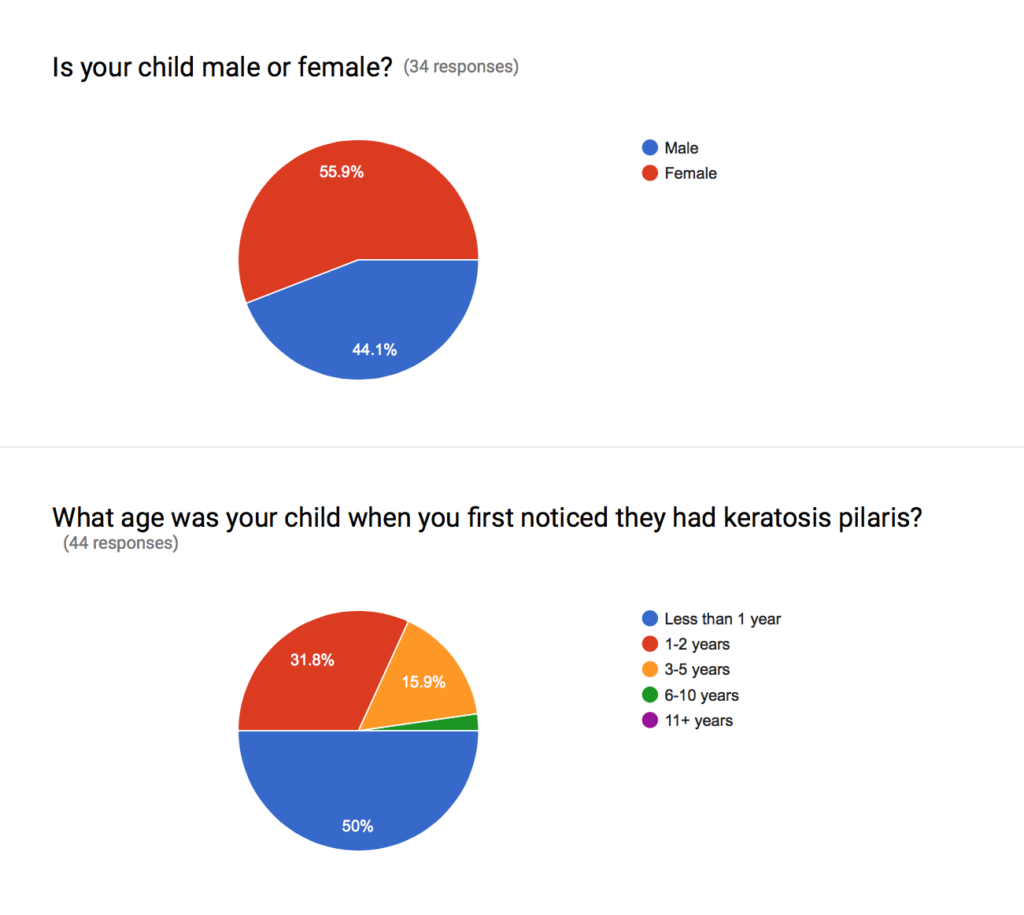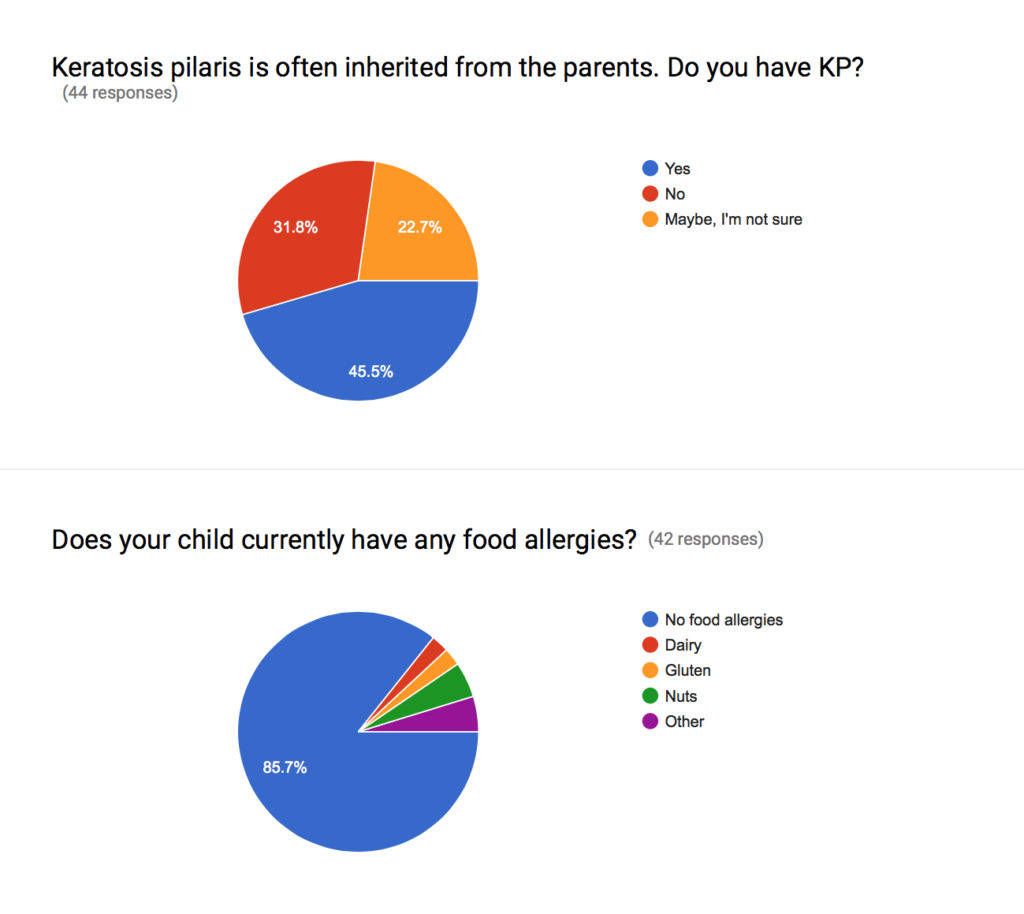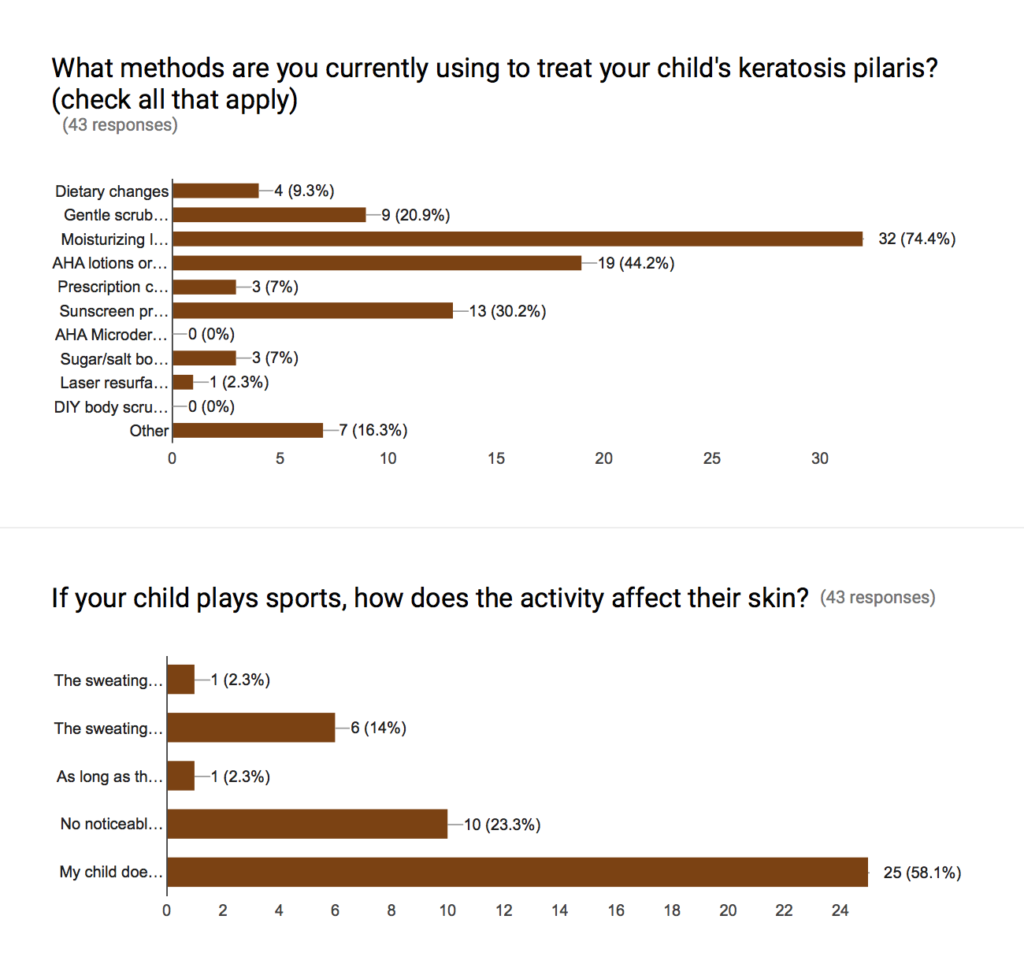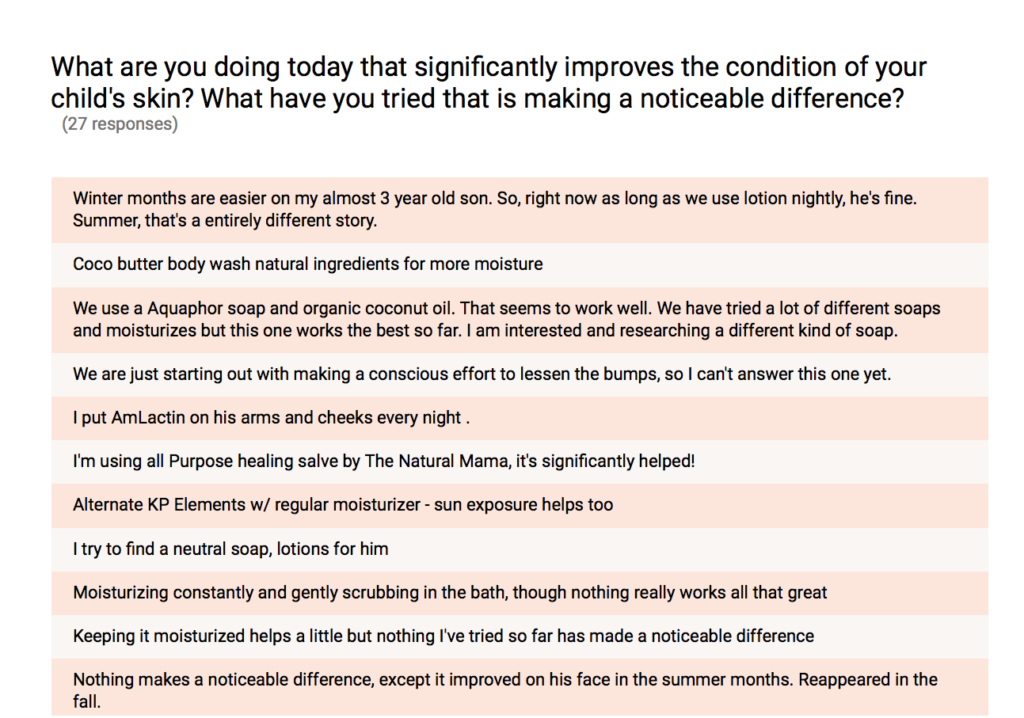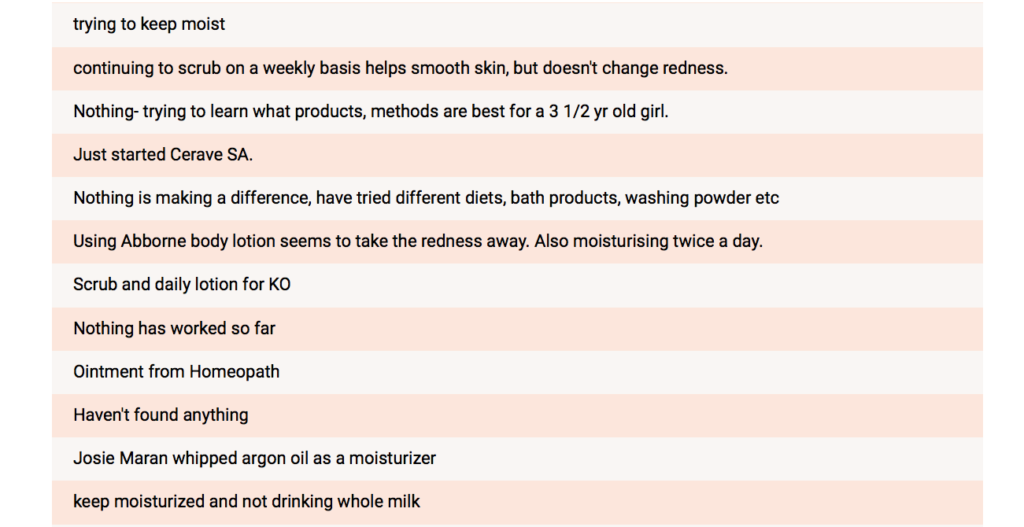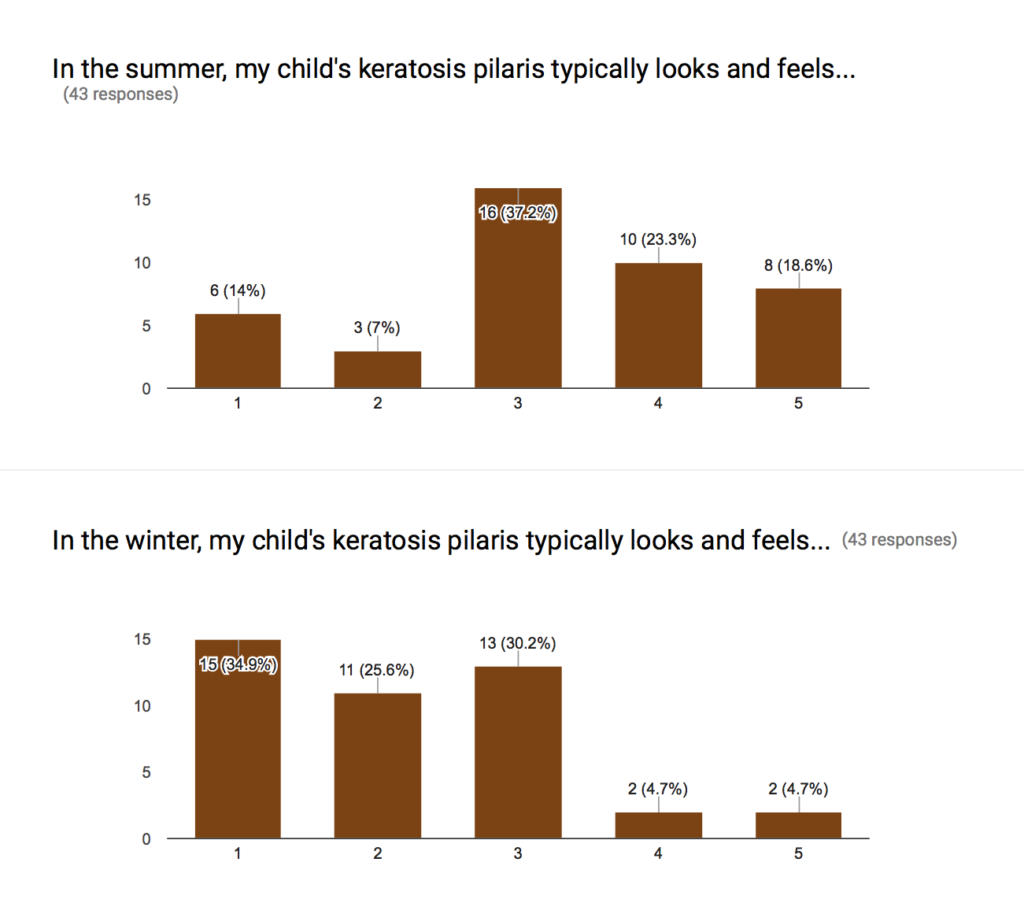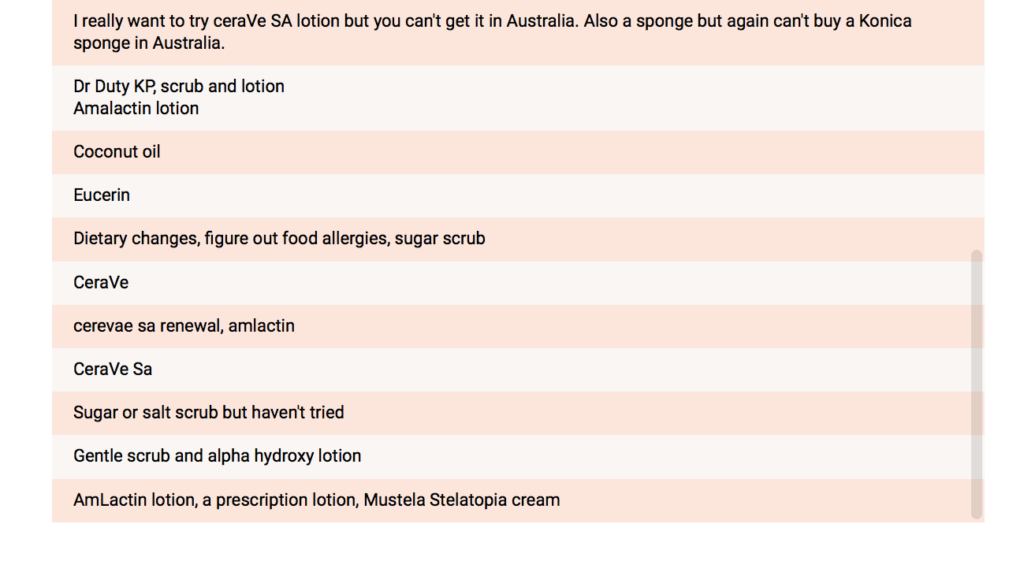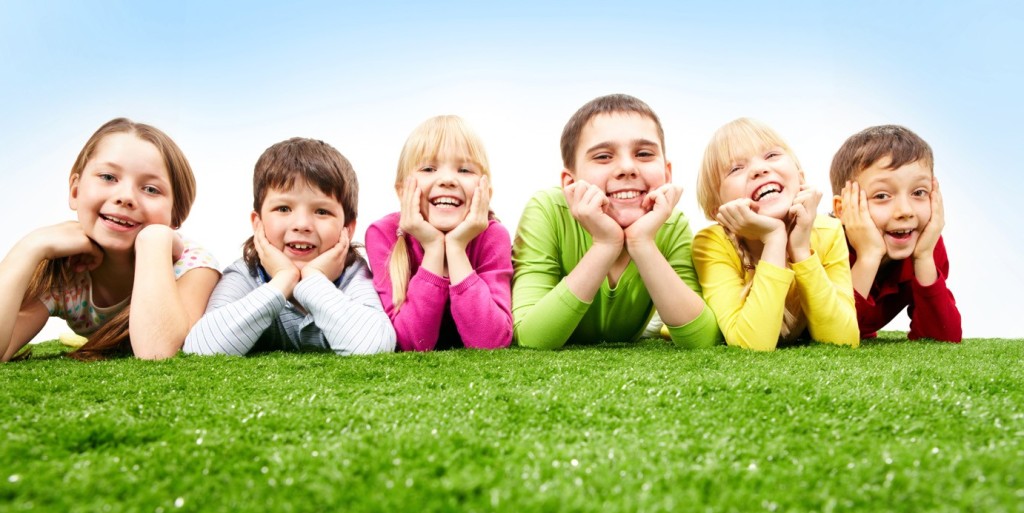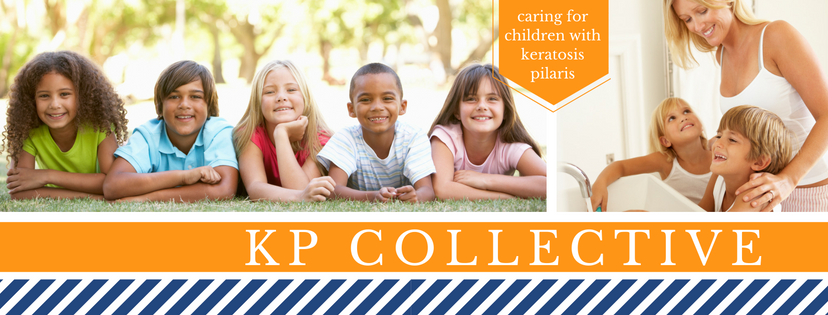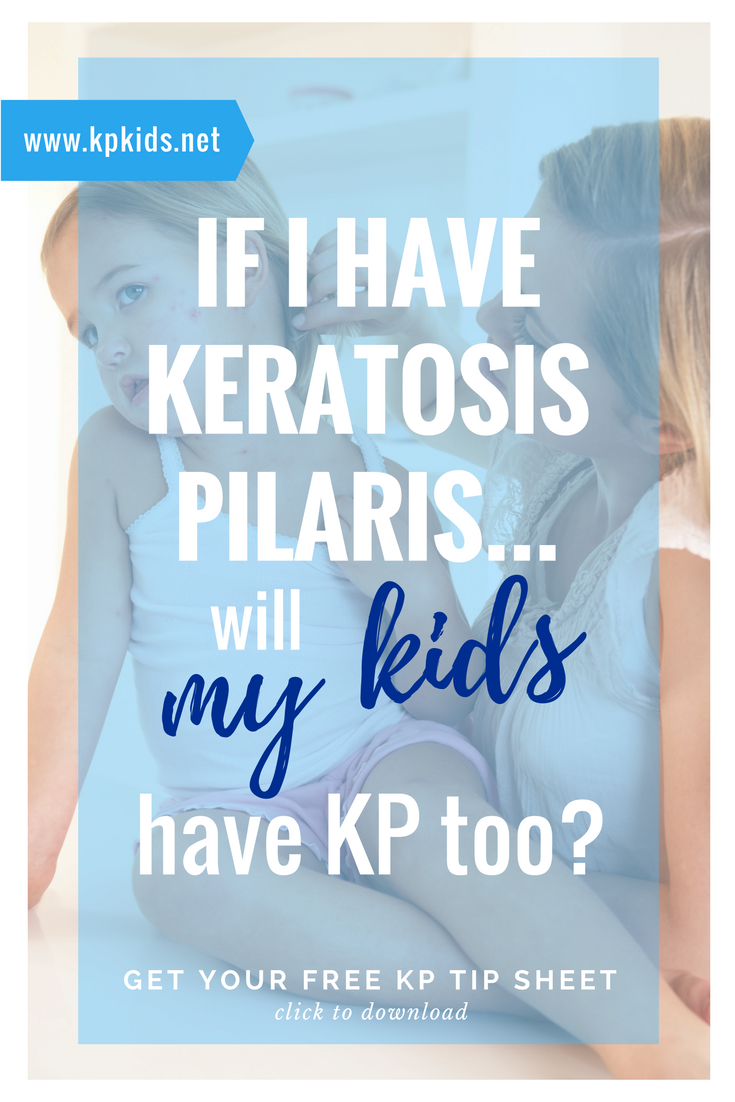
Click to see our list of parent-approved solutions!
We’ve done the research and pulled the reports, and here’s what parents of KP kids were buying in 2017.
These are the top 25 most-purchased KP products in 2017 from our KPKids website. Explore the list below, broken down into categories. Then be sure to hop over to our Facebook group, the KP Collective, to tell us what products are working best for you and your family today.
NOTE: Always read labels and directions before using any product. Consult your doctor or dermatologist for specific advice about keratosis pilaris.
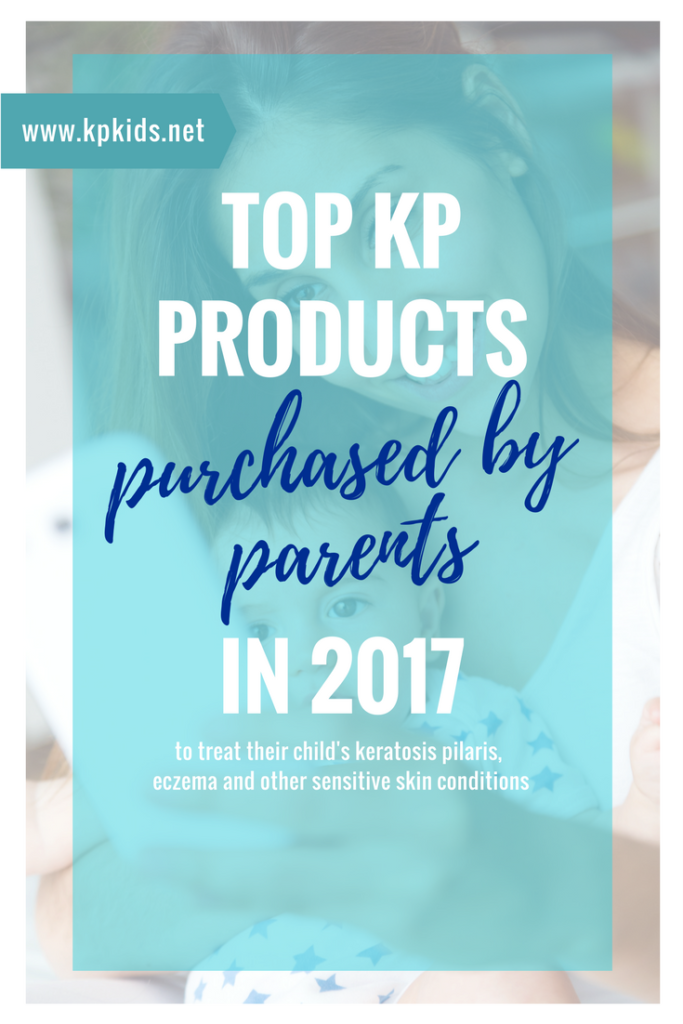
Top 5 Gentle Cleansers & Bodywashes Purchased by KP Parents in 2017
- Aquaphor Baby Wash & Shampoo
- Cetaphil Baby Gentle Wash with Organic Calendula
- CeraVe Renewing SA Cleanser
- California Baby Super Sensitive Shampoo & Bodywash
- Puracy Natural Baby Shampoo & Bodywash, Sulfate Free
KPKids Favorite: Cetaphil Baby Gentle Wash with Organic Calendula
Top 5 Hydrating Skin Lotions & Creams Purchased by KP Parents in 2017
- CeraVe SA Renewing Skin Lotion
- AmLactin Alpha-Hydroxy Therapy Moisturizing Body Lotion for Dry Skin
- Eucerin Intensive Repair Very Dry Skin Lotion
- Lilah James Natural Rejuvenating KP Cream
- DERMAdoctor KP Duty AHA Moisturizing Therapy for Dry Skin
KPKids Favorite: CeraVe SA Renewing Skin Lotion
Top 5 Healing Ointments, Oils & Balms Purchased by KP Parents in 2017
- Aquaphor Baby Healing Ointment
- Nature’s Way Extra Virgin Organic Coconut Oil
- Mustela Stelatopia Bath Oil for Eczema-Prone Skin
- Mustela Stelatopia Moisturizing Emollient Balm for Eczema-Prone Skin
- Era Organics Healing Balm for Babies
KPKids Favorite: Nature’s Way Extra Virgin Organic Coconut Oil
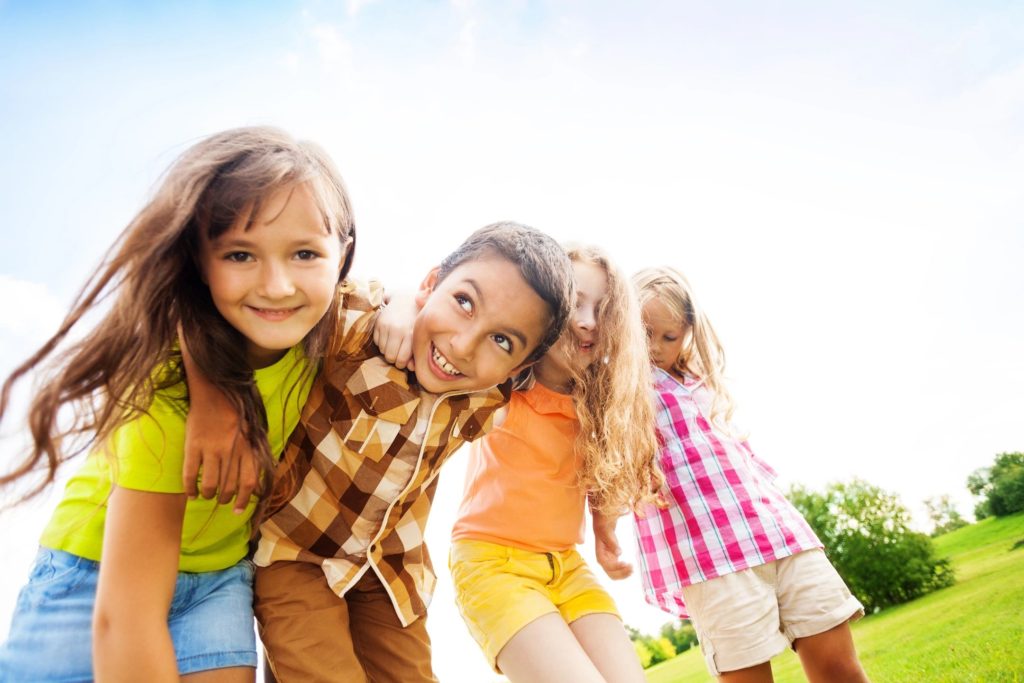
Top 5 Gentle Skin Scrubs & Exfoliators Purchased by KP Parents in 2017
- Konjac Baby Bath Sponges – For Face & Body
- Billy Jealousy LiquidSand Gentle Exfoliating Facial Cleanser
- Clarisonic Mia 2 Sonic Facial Cleansing Brush
- Buf-Puf Reusable Facial Sponge, Extra Gentle
- KP Elements Body Scrub – Keratosis Pilaris Treatment
KPKids Favorite: Billy Jealousy LiquidSand Gentle Exfoliating Facial Cleanser
Top 5 Sensitive Sunscreens Purchased by KP Parents in 2017
- Thinkbaby Safe Sunscreen SPF 50+
- Alba Botanica Very Emollient, Kids Sunscreen SPF 45
- CeraVe Sunscreen Stick SPF 50
- Thinksport Kid’s Safe Sunscreen SPF 50+
- La Roche-Posay Anthelios Kids Sunscreen for Face and Body
KPKids Favorite: Babyganics Mineral-Based Baby Sunscreen Spray, SPF 50 & Blue Lizard Sensitive Sunscreen, SPF 30+
Top 5 Gentle Laundry Products Purchased by KP Parents in 2017
- Wool Dryer Balls, Reusable Natural Fabric Softener
- Puracy Natural Laundry Detergent, Sulfate Free
- all Mighty Pacs Laundry Detergent, Free & Clear for Sensitive Skin
- Dreft Hypoallergenic Liquid Baby Laundry Detergent (Stage 1 or Stage 2)
- Bounce Fabric Softener Sheets, Free and Gentle
KPKids Favorite: Wool Dryer Balls, Reusable Natural Fabric Softener
We hope that you’ll find this list helpful in learning what other parents of children with keratosis pilaris are using to treat their child’s sensitive skin. Have other suggestions? We’d love to know what’s working for your family.
Come join us in our private Facebook group, called the KP Collective, and tell us about your product wins!
[rara_call_to_action title=”” button_text=”CLICK HERE TO JOIN (IT’S FREE!)” button_url=”http://www.facebook.com/kpcollective” target=”_blank” button_align=”center”][/rara_call_to_action]
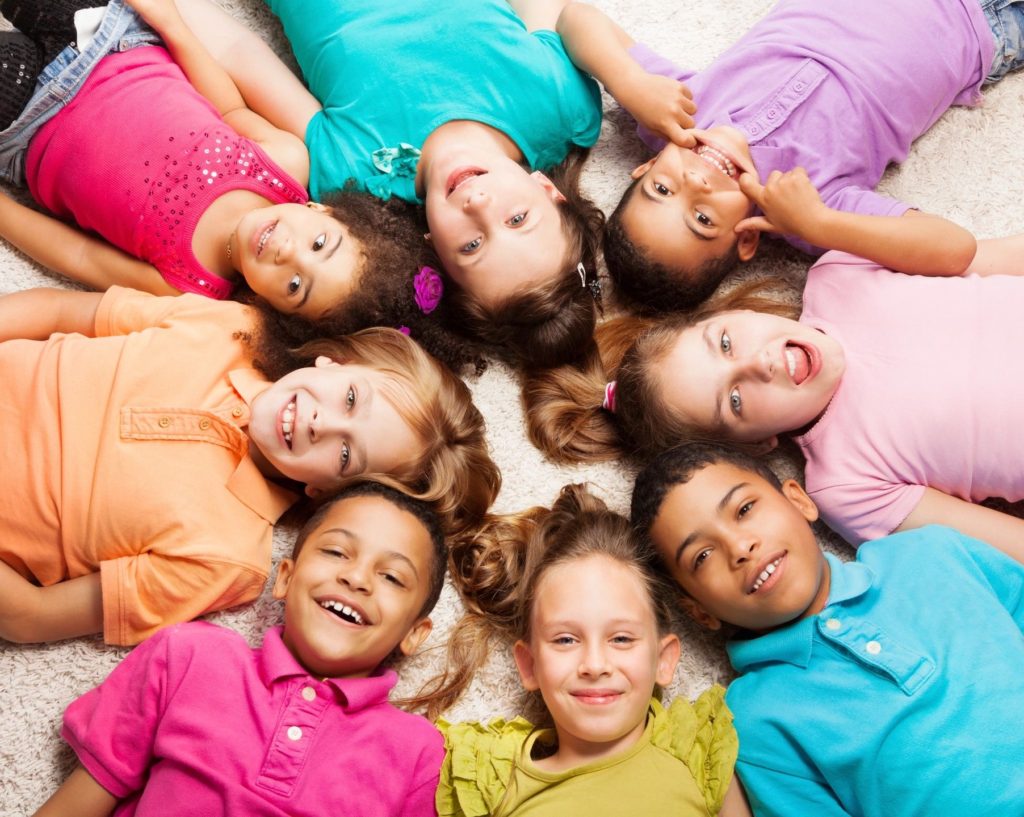
NOTE: Always read labels and directions before using any product. Consult your doctor or dermatologist for specific advice about keratosis pilaris.
DISCLAIMER & TERMS OF USE: Any and all information within this website is for informational purposes only. Please seek professional medical help for proper diagnosis and treatment of your (or your child’s) skin condition. Any products or services advertised here are for informational purposes only and their effectiveness will vary from child to child. You are encouraged to consult a physician or dermatologist to determine what treatment plan will work best for you or your child. Some links within our website are to Amazon products and we will receive compensation when you make a purchase. Thank you in advance for your support of KPKids.
